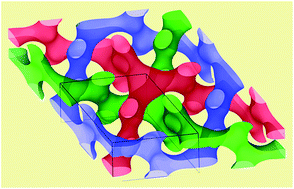Reply to the ‘Comment on “Discovery of a tetracontinuous, aqueous lyotropic network phase with unusual 3D-hexagonal symmetry”’ by G. Schröder-Turk, M. Fischer and S. Hyde
Abstract
A new calculation by Fischer et al. suggests that the 3etc network phase with 3D-hexagonal symmetry (space group #193: P63/mcm) may be a generic structure adopted by self-assembling soft materials, thereby broadening the context for our recent report of its spontaneous formation in lyotropic liquid crystals. The experimental observation of the 3etc phase further validates previous theoretical models used to predict its stability, provocatively suggesting that other polycontinuous network phases predicted by these methods may be discovered in the future. While these network phase morphologies are often mathematically described in terms of their underlying triply periodic minimal surfaces (TPMS), the numerous potential applications of these functional nanostructured soft materials require the development of a concise, consistent, and unambiguous nomenclature for their complete description. In this comment, we propose adoption of a nomenclature that describes each mesophase more generally in terms of the total number of non-intersecting domains into which three-dimensional space is partitioned.


 Please wait while we load your content...
Please wait while we load your content...